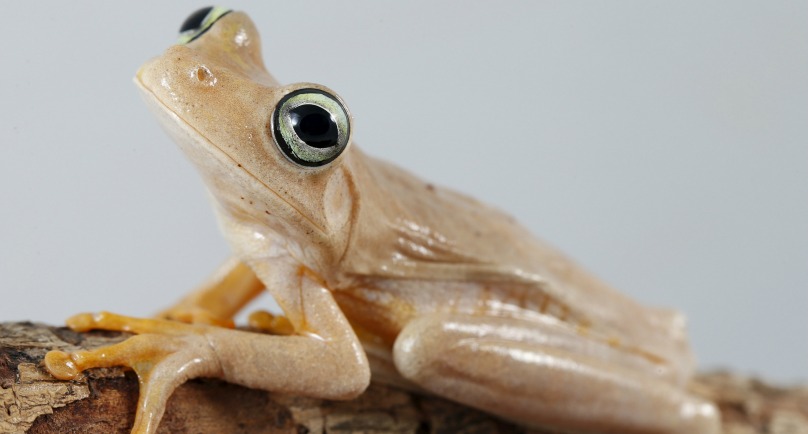Image: A Hypsiboas crepitans frog is pictured at a terrarium in Caracas November 30, 2015. REUTERS/Carlos Garcia Rawlins
By Eyanir Chinea
CARACAS (Reuters) – Venezuelan frogs and toads are in critical danger due to climate change as rising temperatures complicate reproduction and spread a deadly fungus, say scientists, who liken the species to canaries in a coalmine warning of imminent danger.
Scientists studying global warming have warned that rising temperatures make many species worldwide vulnerable, but the phenomenon is already playing out in Latin America where frog and toad species are heading toward extinction.
“Some 60-70 percent of (amphibians) are in critical danger or almost extinct,” said Luis Merlo, a veterinarian working with the animals, surrounded by terrariums filled with small toads.
The survival of nearly 20 frog and toad species, which top Venezuela’s list of endangered species, may rest on a small group of academics in a Caracas laboratory attempting to recreate the amphibians’ natural reproductive conditions.
Merlo leads Venezuela’s first center for the conservation of amphibians, where studies them in hope of boosting the fledgling population.
Amphibians in the Venezuelan wild have been increasingly threatened over the last two decades, according to this year’s “Red Book of Venezuelan Fauna,” published by a group of Venezuela-based scientists.
There are 15 species of a small frog endemic to Venezuela’s mountains that have been hit especially hard, their brilliant colors not seen for some three decades.
Biodiverse Venezuela boasts vast tracts of rainforest, Andean mountains and Caribbean coastline. It is in the world’s top 10 nations in terms of amphibian numbers.
“They are very sensitive, dependent on the environment and beneficial to humans,” Merlo said.
BELLWETHERS
These amphibians are also considered bellwethers for the health of their ecosystem. They are especially susceptible to warming because they have non-hard-shelled eggs, which cannot survive drying.
An epidemic of the deadly amphibian chytrid fungus, which attacks their skin, has also led to the frogs’ decline worldwide.
The wave of frog extinction began in Mexico and has spread south to South America, said Jon Paul Rodriguez of the Species Conservation Commission of the International Union for Conservation of Nature (IUCN).
Countries such as Costa Rica, Panama and Ecuador have also initiated conservation centers.
“The toads are like the canaries that were used in ancient times in the mines: they are a sign that something serious is going on in the environment,” Rodriguez said.
“If we do not stop it in time, we will all be losers.”
(Writing by Girish Gupta; Editing by Alexandra Ulmer and Cynthia Osterman)
Copyright 2015 Thomson Reuters. Click for Restrictions.


